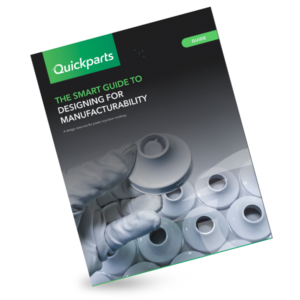When embarking on the path to manufacturing, it’s essential to invest time and effort in designing your part for manufacturability. As your project progresses through its development stages, your original model might require alterations to align with the chosen manufacturing process.
Each manufacturing process possesses distinct accuracy, resolution attributes, and inherent design limitations. Therefore, designing for one process differs from designing for another. It’s crucial to consider these design considerations from the project’s outset, as they directly impact production costs.
Additive Manufacturing Considerations
If your part is intended for additive manufacturing, it’s vital to acknowledge that certain design features might need adjustments to ensure successful production. Here are key factors to consider when designing for additive manufacturing:
- Breaking up larger parts: If your part exceeds the space limitations of the chosen process, dividing it into smaller components that can be assembled later is a viable solution.
- Avoiding sharp edges: Eliminating sharp edges in your additive manufacturing design enhances accuracy and ensures smoother printing results.
- Managing overhangs: Geometric angles larger than 45 degrees in your design may require support structures, potentially limiting the complexity of the final product.
- Optimizing wall thickness and hollowed interiors: Thicker walls and incorporating hollowed interiors can reduce print time, although for SLA parts, drainage holes are necessary for hollow features.
Subtractive Manufacturing Considerations
CNC machining offers an alternative for prototypes, providing the opportunity to achieve tight tolerances and create objects using the exact production materials required, whether metal or plastic. However, if the production quantity exceeds 50 parts, it can become costly in terms of both time and money. Consider the following when designing for subtractive manufacturing:
- Material selection: Benefit from a wide range of engineered grade materials that offer superior strength, flexibility, chemical resistance, or other critical characteristics, ensuring optimal performance.
- Outsourcing capabilities: When outsourcing your CNC project, take advantage of 5-axis capabilities, which enable the production of more intricate and complex designs.
- Thin part features: CNC machining can achieve part features as thin as 0.020 inches, providing versatility in design possibilities.
- Internal threads: With CNC machining, it is possible to create internal threads within your part, enhancing functionality and assembly.
Injection Molding Considerations
Injection molding often stands as the preferred method for producing production parts. Its cost-effectiveness becomes evident even with quantities as low as 50 parts, making it advantageous to design directly for the injection molding process. Consider the following points when designing for injection molding:
- Consult our helpful guide: We have developed a comprehensive guide to assist you in understanding the essential aspects of designing a part for the injection molding process, ensuring optimal results.
By carefully considering the specific design considerations for each manufacturing process—whether additive manufacturing, subtractive manufacturing, or injection molding—you can optimize your part design for successful production.
Injection Molding
Injection Molding is usually the preferred method for producing production parts. And because injection molding is economical in as few as 50 parts, it could be wise to design directly for the injection molding process if a production run is already in the budget.
With that in mind, we’ve produced a helpful guide to help you learn a little more about what it takes to design a part for the injection molding process.

